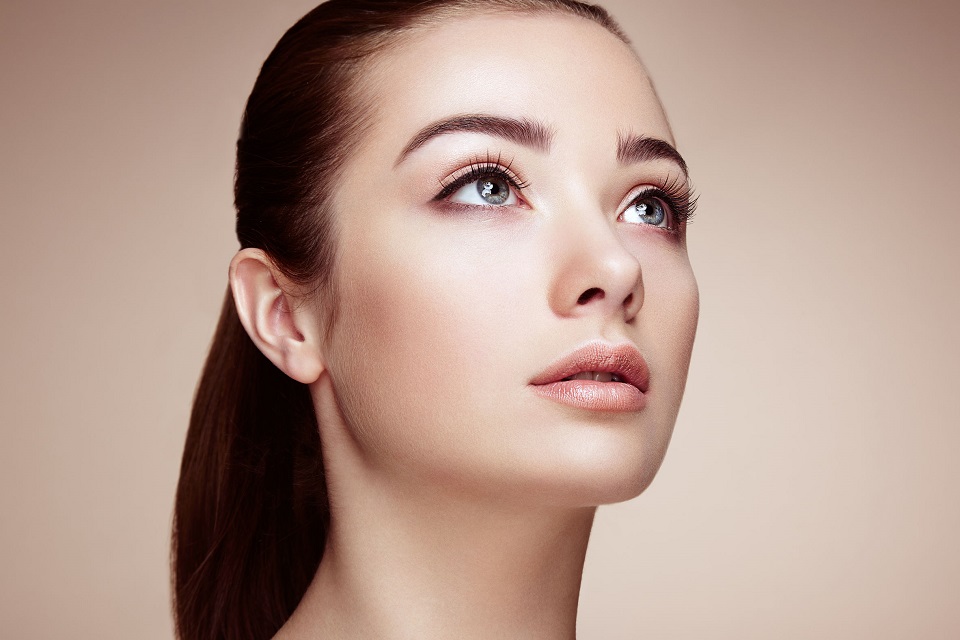
BY LISA WILLIAMS
Jennifer Lopez was once named as People‘s most beautiful woman in the world.
“It’s so crazy. Rarely am I left speechless, but I feel honored. I feel not worthy, you know? I feel happy and proud. Proud that I’m not 25!” the 41-year-old New York City-born singer-actress told People as she joined the ranks with Halle Berry, Jennifer Garner and Beyonce Knowles.
Known for her flawless skin and curvy figure, she attributed looking good to her personal life. “I think it’s because I have a lot of love in my life. I feel lucky to be an attractive person, but I’ve always felt that real beauty always comes from your heart.” While I’m sure love helps, so does poise, intelligence and a kind heart. But is that all?
What exactly makes one face so “beautiful” that it mesmerizes millions, transcending the boundaries of nations? Are there some universal and objective standards ingrained in our subconscious minds that define an appealing face despite differences in cultural specifics and individual taste?
The answer is YES. Mysterious mathematical rules of the universe, such as symmetry and proportion, are found to be integral in the judgment of facial aesthetics.

Understanding these rules of aesthetics will allow for a more objective analysis of facial beauty in any person. They provide reference points to guide your doctor or plastic surgeon when augmenting facial features, bringing your mien closer to balance and perfection so as to present the best version of yourself.
Here, we reveal four Universal Laws that define the beauty we love to the power of infinity.
![]() First Law of Universal Beauty: Smooth and Even Rules
First Law of Universal Beauty: Smooth and Even Rules
Regardless of your race and genetic skin colour, our brains are hardwired to appreciate a smooth refined surface texture and an ethereally glowing, even, healthy-looking skin tone – which essentially defines the ideal complexion pursued by women throughout the world.
This is exemplified beautifully by the stunning J.Lo and Halle Berry despite differences in their skin colour.
TIP: When it comes to evening out your complexion, look no further than Pico Pigment, one of the latest generation of no downtime pigment fighters on the market now.
Read More: Beauty Marks – What Secrets Do Your Moles Hold?
![]() Second Law of Universal Beauty: Symmetry is Key
Second Law of Universal Beauty: Symmetry is Key
It sits quietly, but does not go unnoticed.
Symmetry has long been one of the traits associated with health, beauty and physical attractiveness in humans or even in animals. The reason is very primal – symmetry is basically an advertisement we wear on our faces to tell the opposite sex that we possess good genes, are free from disease and worthy to pro-create with!
Facial asymmetries begin to appear early in our humble embryonic beginnings when instability occurs during this crucial growth period of pregnancy. Through our lifespan, further asymmetry can result due to external influences. So the more symmetrical we are, it is a sign that our bodies are healthier and better able to cope with these stresses.
Visual studies manipulating human faces have unanimously found that we find more symmetrical faces more appealing. Cate Blanchett and Brad Pitt are celebrities found to have some of the highest ratings of symmetry.
TIP: There are ways to make your face more symmetrical such as by slimming down your jawline or using facial fillers to augment your smaller side.
Read More: Skin in the City: Dermal Guardians for City Dwellers

![]() Third Law of Universal Beauty: Proportion, Proportion, Proportion
Third Law of Universal Beauty: Proportion, Proportion, Proportion
What does the healthy human heart, the Parthenon in Athens, and beautiful faces share in common? They all follow the Golden Ratio.
Also known as the Divine Proportion, the ratio of 1:1.618 (often denoted as F or phi) is imprinted in the DNA of all living things and even in inanimate objects we consider proportionate, symmetrical and hence, aesthetically pleasing. This has been long recognized by Da Vinci, who uses the ratio in his drawings of the Vitruvian Man and Mona Lisa.
Dr. Stephen Marquardt, a plastic surgeon, further incorporated the Golden Ratio to make a Phi Mask. From the proportion of the length of nose, position of the eyes, to length of the chin, all embodies phi in all their relative dimensions. The concept is rather intuitive as you can imagine putting J Lo’s eyes with Jennifer Aniston’s nose and Angelina Jolie’s lips put together on Halle Berry’s face might be disastrous even though each may be considered attractive individually.
When analyzing the famous faces of Jessica Simpson, Tom Cruise, Brad Pitt and George Clooney, their faces fit the Phi Mask to a great extent – ‘mathematical’ beauty resonates harmony of their facial features.
TIP: To optimise your facial proportions, some face have found improvements in their overall appearance when they augment their chin with chin fillers or enhance their nose with threadlifts.
Read More: The Lowdown on Nose Thread Lifts – What Some Doctors Don’t Tell You Before Your Lunchtime Nose Job.

![]() Fourth Law of Universal Beauty: Mind your Angles
Fourth Law of Universal Beauty: Mind your Angles
Modern research has decoded the Universal Angle of Beauty – the magical angle of 9-12 degrees of inclination (between the vertical line and lines representing the vertical and horizontal ramus of the jaw) is the last secret to what pleases our eyes.
TIP: This also explains why Botox has gone beyond crow’s feet and frown lines, and is now extremely popular for recontouring and softening of the common square-jaw syndrome due to masseter hypertrophy (excessively large jaw chewing muscle due to genetics and over-chewing of tough foods).
Read More: The Flush Beyond The Blush: Rosacea & You

This is something new and news to us human.
I think everyone wish they also look young and have nice complexion.